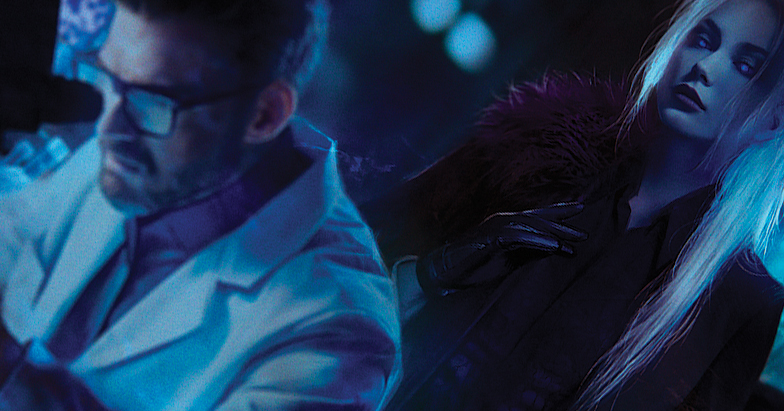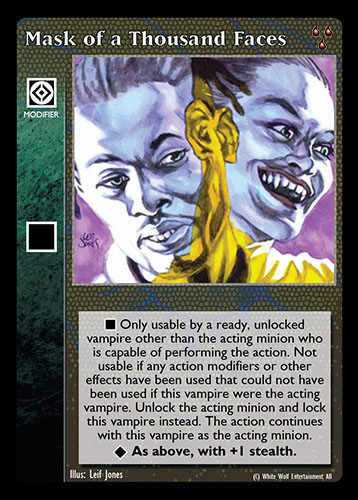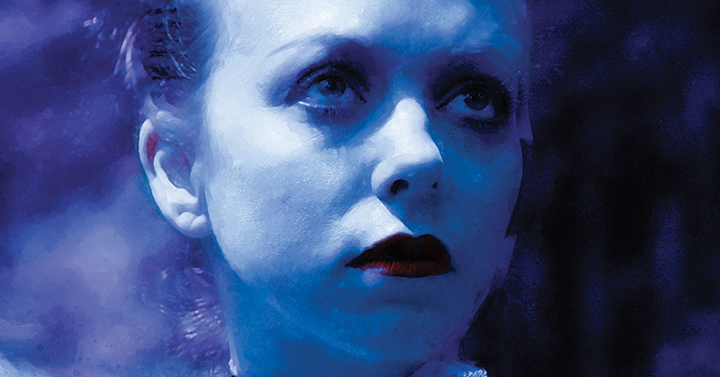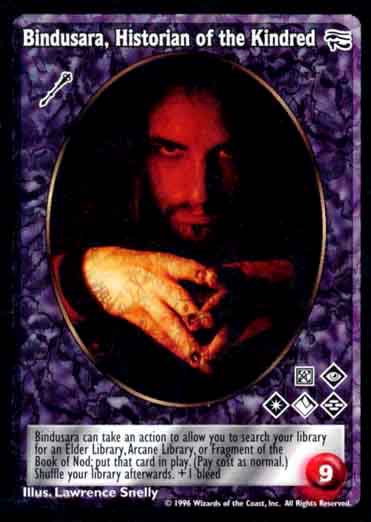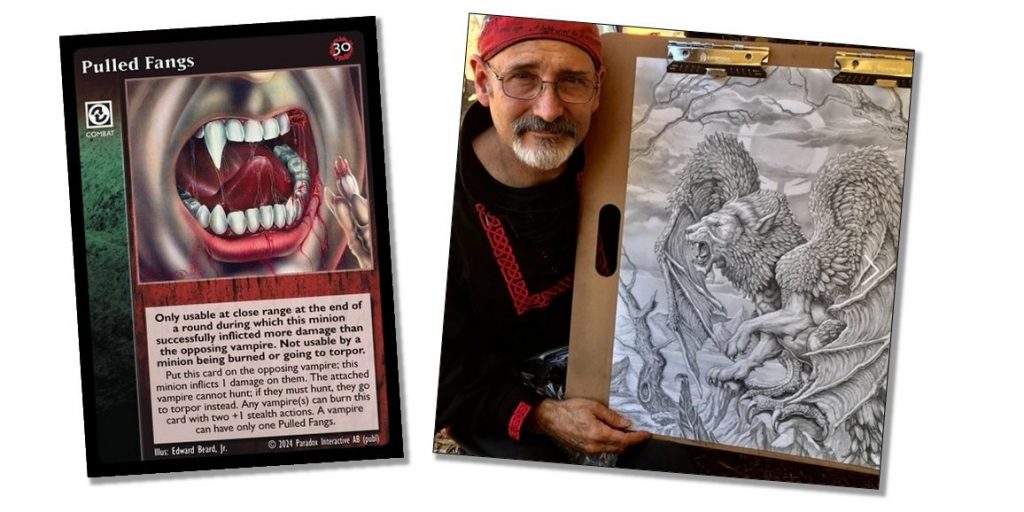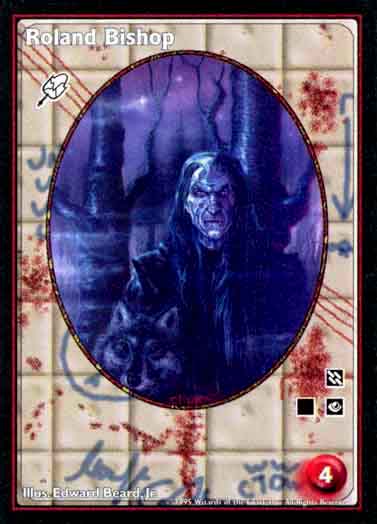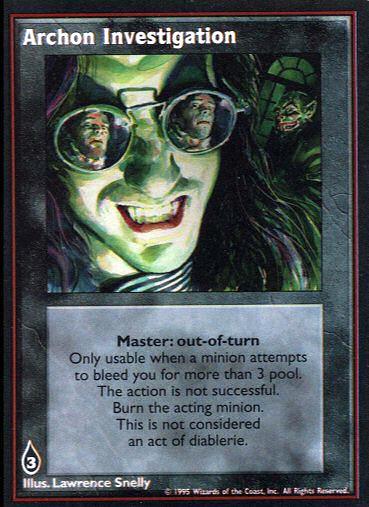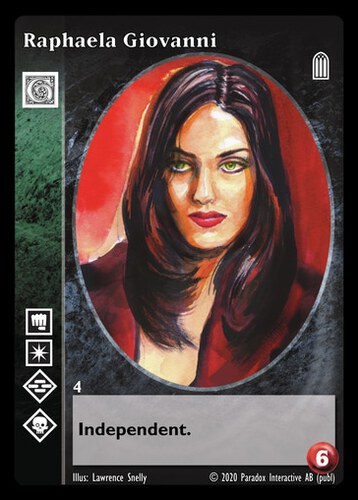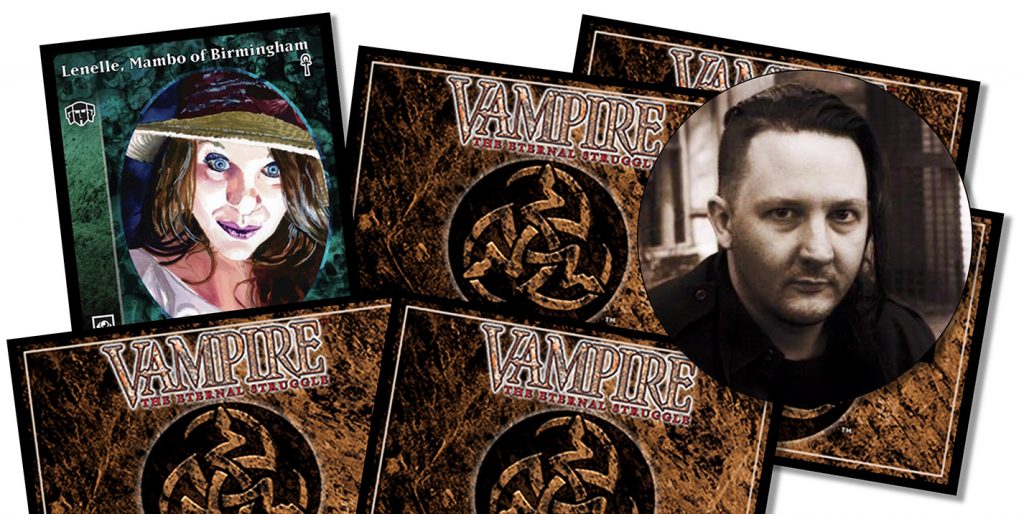
Words by Ben Peal, product director of Black Chantry Productions:
Greetings, fellow Kindred! With the new year approaching, it’s about time I gave you a product roadmap update for the Vampire: The Eternal Struggle (VTES) releases slated for 2024 plus a production update for 2025.
2024 was a lighter release schedule for us, seeing the releases of the 30th Annivesary set and the Fifth Edition Lasombra pre-constructed deck. We also had the launch of print-on-demand in Europe via Gamepod, helping meet a critical need there. 2025 is shaping up to have a much busier release schedule.
The Hecata pre-constructed deck was planned to be released alongside the Lasombra deck, but we felt a fourth round of playtesting was needed for it. Translation work the Hecata deck into French, Spanish, and Portuguese has been completed, the print files have been sent to the printer, and the Hecata deck is presently slated for release at the end of February 2025. We’ve had a couple of sneak previews for it already and we’ll have more of them coming soon.
Playtesting for the New Blood decks for Ravnos, Salubri, Tzimisce, Lasombra, and Hecata also concluded this year and we anticipate a Q2 2025 release for those. For logistical reasons, we’re likely to split their release into two waves: Ravnos, Salubri, and Tzimisce in one wave and Lasombra and Hecata in the other wave.
We are currently in Round Two of playtesting of the Sabbat pre-constructed decks. It’s an ambitious project, exploring the Sabbat in much more depth and in ways that encompass previously-published Sabbat kindred, so we may need a fourth round of playtesting for it. As it stands, we’re aiming for a release date timed with the Week of Nightmares in Columbus, Ohio in June of 2025.
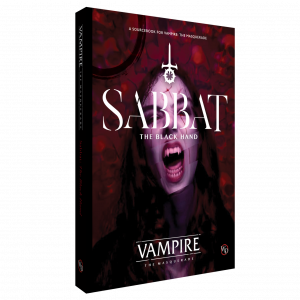
As I’ve mentioned previously, I strongly recommend reading the Fifth Edition Sabbat book to get an understanding of how the Sabbat are currently being handled in Vampire: The Masquerade. The main thing – the core principle – is that the Sabbat largely discard any clan affiliation and instead adopt a Path-aligned ideology. So instead of having clan-themed pre-constructed decks for the Sabbat, we’ll have four Path-themed decks: Path of Caine, Path of Cathari, Path of Death and the Soul, and Path of Power and the Inner Voice. These decks will have crypt cards that are keyworded for their respective path and library cards specific to those paths. Separately from those decks, we’ll also release cards that give Paths to existing Sabbat kindred. If you don’t have a copy of the Fifth Edition Sabbat book, I recommend the Vampire: The Masquerade wiki’s page on the Sabbat as a quick primer.

Following the Sabbat decks, we’ll move away from pre-constructed decks to a pair of themed releases: Brazil By Night and Shadows of New York. With Brazil By Night, the release is a personal one, as we lost five members of the Brazilian VTES community to COVID-19. We’ve decided to honor those players with crypt cards and we’re going to explore the nation more in-depth with additional library cards and crypt cards. With Shadows of New York, we’ll cover the characters and events of the Shadows of New York, Coteries of New York and Reckoning of New York visual novels for Vampire: The Masquerade. Across both of these sets, you can expect to see additional crypt and library cards for the Camarilla, Anarch, and Sabbat sects. We anticipate a late Q3 2025 release for them.
That largely covers the releases for 2025. Looking past the horizon into 2026, I think we can expect to see New Blood packs for the Sabbat Paths, at least one more themed set like Fall of London, Brazil By Night, and Shadows of New York, and possibly another Path-themed pre-constructed deck or two. But there’s plenty of work to do for 2025 before I can give firm commitments to 2026.
Regarding the current tournament metagame and the possibility of errata, we certainly keep an eye on the tournament scene and its trends and we’re very aware of the concerns with Anarchs. Generally-speaking, there are three ways of addressing this: banning cards, issuing errata for cards, and developing new cards to counter/interact with the problem cards. In terms of banning cards and issuing errata for cards, I think we’re largely done with those methods for addressing issues. We do have cards on our internal watch list and we may still exercise those methods to address them – and there are two specific cards I’ll mention in a moment – but I think we’re pretty close to our comfort level with the existing legacy VTES cards and the newer Fifth Edition VTES cards.
Additionally, we have the Hecata pre-preconstructed deck and the Ravnos, Salubri, Tzimisce, Lasombra, and Hecata New Blood packs being released over the next 2-4 months, and we’d like to see the overall impact on the tournament environment after those cards are released before we make any errata decisions, mainly because it’s a lot of cards in a short time span. As for the aforementioned two specific cards, they are as follows:
Baba Yaga: Baba Yaga will be replaced with a new card named Gorgo with new artwork but otherwise the same stats and special abilities. The Russian mythos in the World of Darkness is still being worked on and the V5 canon may end up not permitting us to use Baba Yaga as a character in VTES. In the interests of having a published card instead of PDF-only we’ll release Gorgo in an upcoming anthology set in 2025 (release date not yet determined).
Major Boon: The present wording of the card has it playable only after a bleed action has been resolved – after priority has been passed on any action modifiers and reactions – but it also creates a window for playing additional action modifiers after that resolution. That doesn’t work within the mechanics of the game, so it’ll be re-issued with updated card text in an upcoming promo pack in 2025 (release date not yet determined).
Many thanks to the playtesters, the event organizers, and to all of you as players! I look forward to the next year, packed with new VTES releases!
Ben Peal
Product Director
Black Chantry Productions
The preview card in this article is from the upcoming Fifth Edition Hecata preconstructed deck. Lenelle, Mambo of Birmingham has art by Ken Meyer Jr, illustrator for Vampire: The Eternal Struggle since 1994!
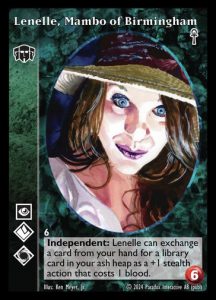
Copyright © 2025 Paradox Interactive AB. www.paradoxinteractive.com. All rights reserved. Vampire: The Eternal Struggle and Vampire: The Masquerade® are trademarks and/or registered trademarks of Paradox Interactive AB. All rights reserved.




